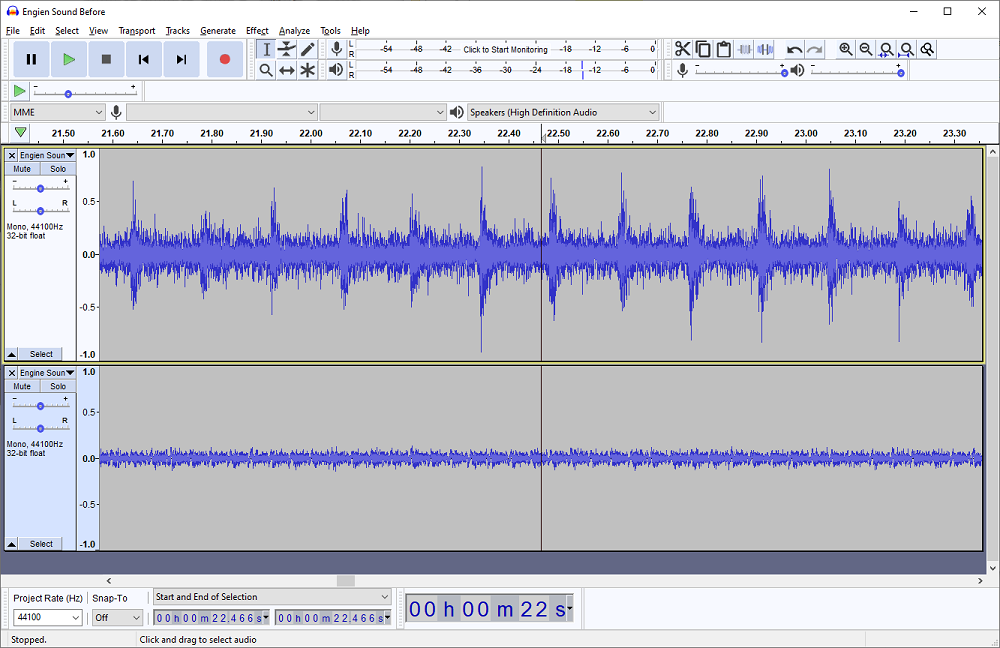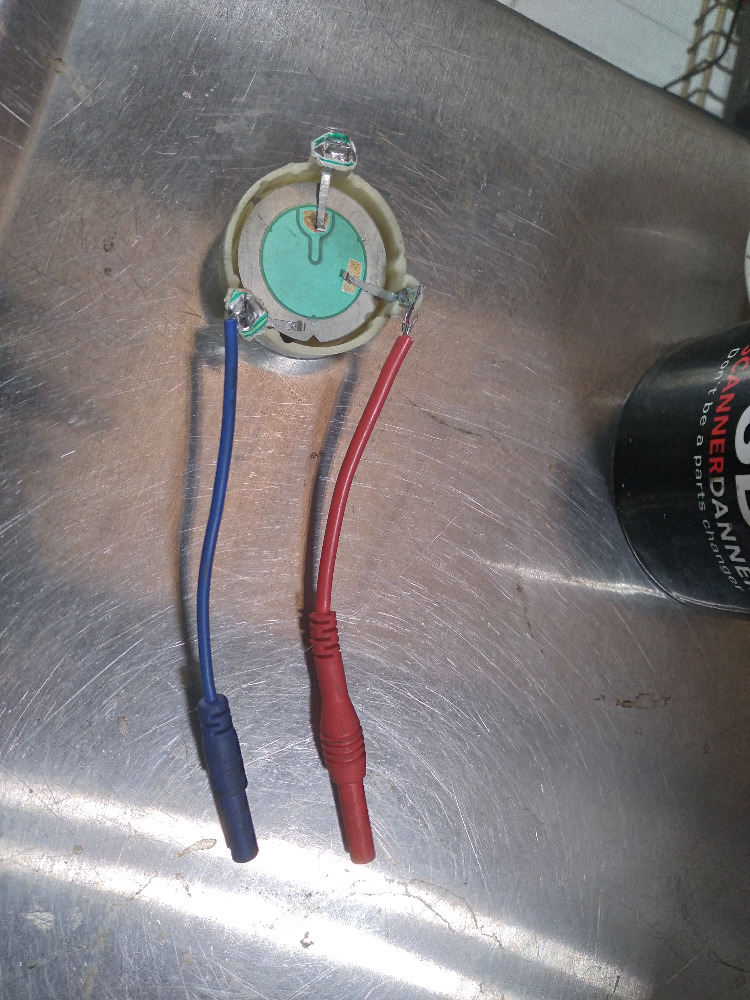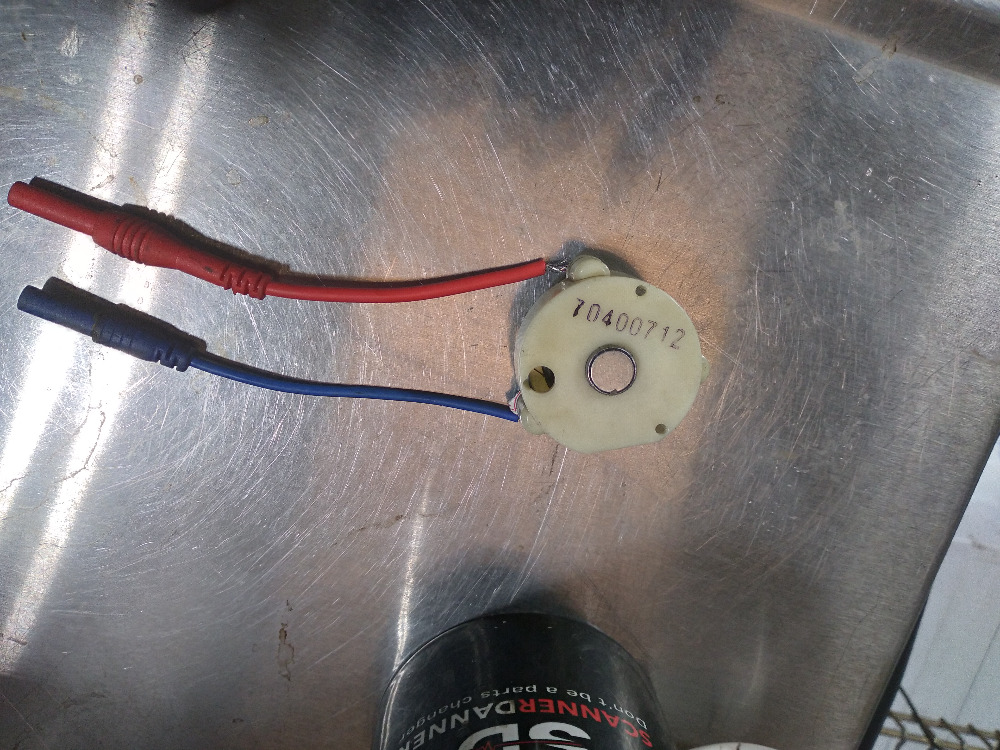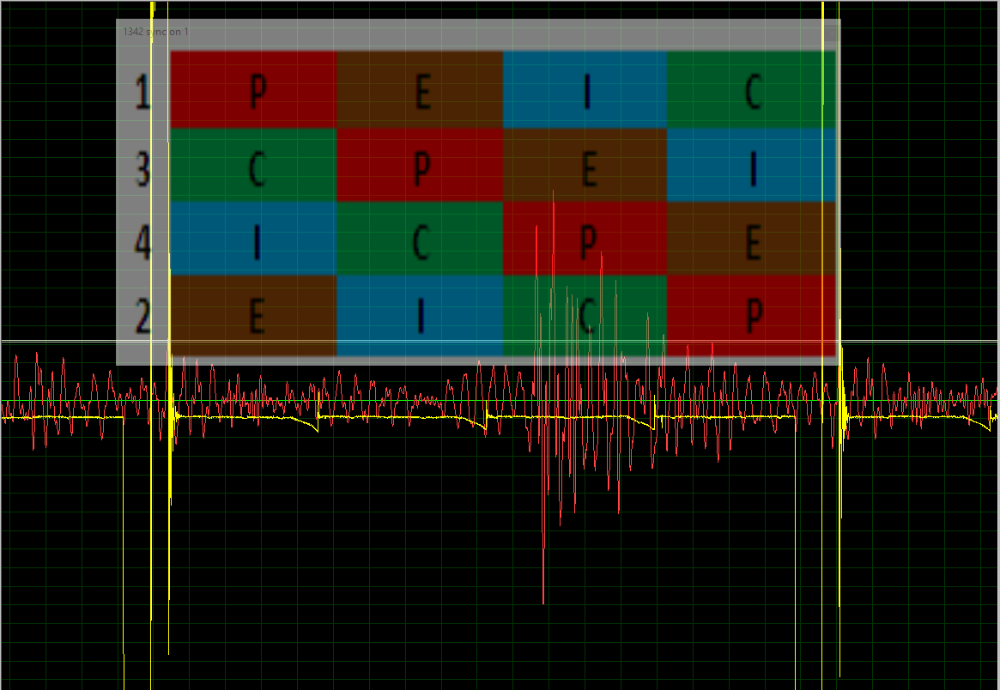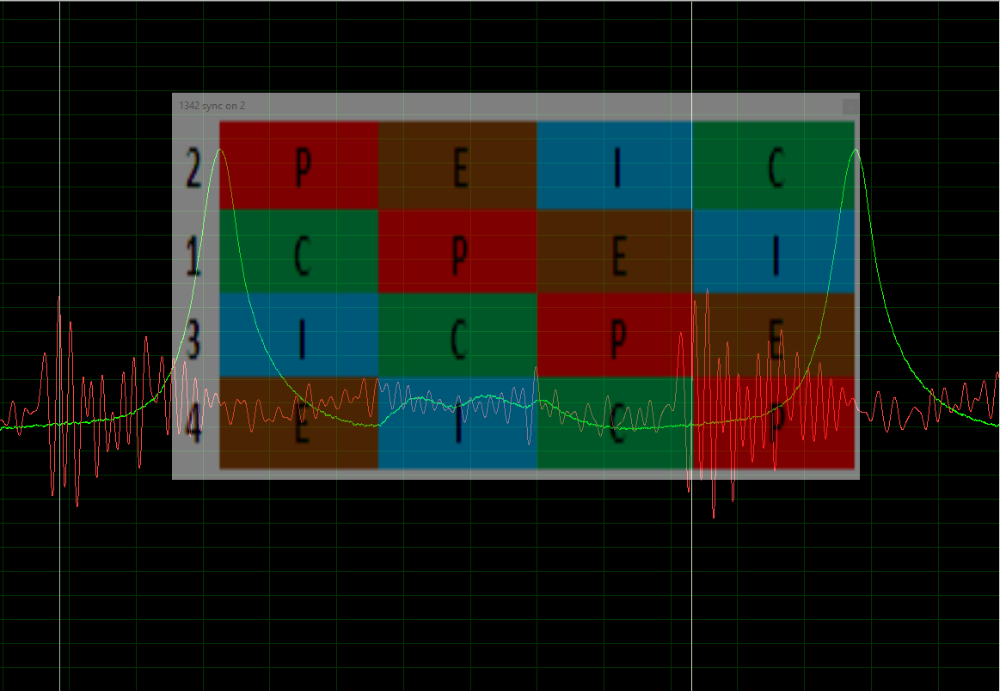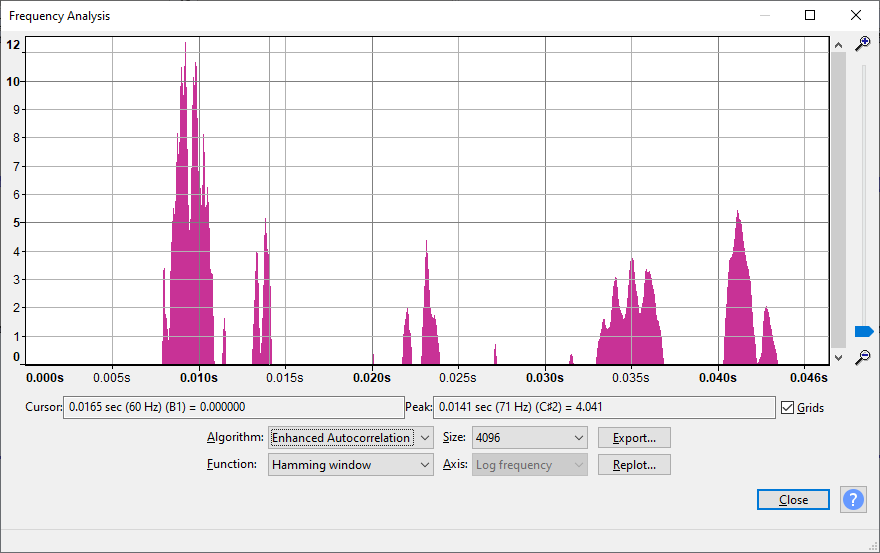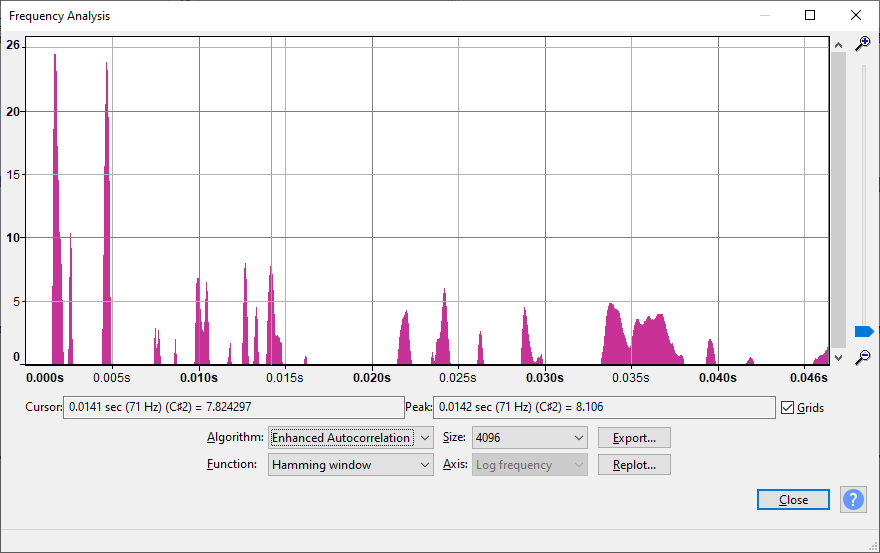*** Restricting New Posts to SD Premium Members ONLY *** (09 May 2025)
Just made a new account? Can't post? Click above.
A place to discuss hardware/software and diagnostic procedures
Audio recording analysis as diagnostic method?
- JeffBirt
-
Topic Author
- Offline
- Premium Member
-

Less
More
- Posts: 129
- Thank you received: 34
3 years 9 months ago - 3 years 9 months ago #52874
by JeffBirt
Audio recording analysis as diagnostic method? was created by JeffBirt
I was working on a 2011 Mini Countryman this past weekend which had an awful engine clatter. After my initial inspection I suspected it was not a rod knocking (it had been driven 6 months in this condition and there was no debris in the oil.) I ordered a belt and water pump pully as I could see with a borescope that both were worn out and had head that both can produce a rod knock type clatter. Short story, the pully and belt fixed it.
I decided to take a video as I had not come across a good before/after recording of this clatter noise. When editing the video I was surprised that even the crude audio level chart of the video editing software clearly showed the difference between the two sounds samples (before and after fix.) I then exported the audio and brought it into Audacity to get a better look (image attached.) The microphone was in the same place during both recordings so the audio level between the recordings is true to life (I did not normalize the samples.) Top trace is before, bottom trace is after. [If you are up for a laugh I'll post a link to the video when I'm done editing it. Just a shade tree mechanic in his driveway. ScannerDanner has nothing to worry about ]
]
While I have used the frequency of a squeak or other noise to help track down which rotating component was making the sound I had never recorded and analyzed the sound before. It seems to me that if one one audio channel there was a reference, such as crank position then it would be possible to narrow down what was making the noise by it frequency relative to crank position. This type of diagnoses may not be useful in practice but I thought it was interesting nonetheless.
As I am not a professional auto tech/mechanic I'm curious if this type of audio recording analysis is done, is pointless, etc. I'm picturing a mechanics stethoscope type probe connected to a computer to analyze the sound and provide some feedback. Maybe a silly idea. I still use a long screwdriver with the handle pressed to my ear [it worked when my grandpa was wrenching on Model T's and still works today ]
]
I decided to take a video as I had not come across a good before/after recording of this clatter noise. When editing the video I was surprised that even the crude audio level chart of the video editing software clearly showed the difference between the two sounds samples (before and after fix.) I then exported the audio and brought it into Audacity to get a better look (image attached.) The microphone was in the same place during both recordings so the audio level between the recordings is true to life (I did not normalize the samples.) Top trace is before, bottom trace is after. [If you are up for a laugh I'll post a link to the video when I'm done editing it. Just a shade tree mechanic in his driveway. ScannerDanner has nothing to worry about
While I have used the frequency of a squeak or other noise to help track down which rotating component was making the sound I had never recorded and analyzed the sound before. It seems to me that if one one audio channel there was a reference, such as crank position then it would be possible to narrow down what was making the noise by it frequency relative to crank position. This type of diagnoses may not be useful in practice but I thought it was interesting nonetheless.
As I am not a professional auto tech/mechanic I'm curious if this type of audio recording analysis is done, is pointless, etc. I'm picturing a mechanics stethoscope type probe connected to a computer to analyze the sound and provide some feedback. Maybe a silly idea. I still use a long screwdriver with the handle pressed to my ear [it worked when my grandpa was wrenching on Model T's and still works today
Last edit: 3 years 9 months ago by JeffBirt.
Please Log in or Create an account to join the conversation.
- Chad
-

- Offline
- Moderator
-

- I am not a parts changer.
Less
More
- Posts: 2118
- Thank you received: 708
3 years 9 months ago - 3 years 9 months ago #52877
by Chad
"Knowledge is a weapon. Arm yourself, well, before going to do battle."
"Understanding a question is half an answer."
I have learned more by being wrong, than I have by being right.
Replied by Chad on topic Audio recording analysis as diagnostic method?
I, personally, like the idea. I had an Idea similar to this 20 years ago, before the internet exploded. I would see customer's come in ( I was just a shop helper, back then ) and try to describe the noise their car was making. I got the idea of compiling audio recordings of different mechanical problems/failures, that you could let the customer browse through, until they found their noise. I thought it was a good idea, at the time. But, I never did anything more than talk about it.
Fast forward 20 years: I use a piezo sensor (from an old smoke detector)
that I glued to a magnet to. I stick the magnet to the engine block, and with an ignition sync, I can see the repetition of a noise, as it relates to engine, or any other rotational cycle.
I have not mastered this technique, yet. But, I really like the idea. I can find VERY little information to aid in my quest to improve/expand on this subject.
Fast forward 20 years: I use a piezo sensor (from an old smoke detector)
that I glued to a magnet to. I stick the magnet to the engine block, and with an ignition sync, I can see the repetition of a noise, as it relates to engine, or any other rotational cycle.
I have not mastered this technique, yet. But, I really like the idea. I can find VERY little information to aid in my quest to improve/expand on this subject.
"Knowledge is a weapon. Arm yourself, well, before going to do battle."
"Understanding a question is half an answer."
I have learned more by being wrong, than I have by being right.
Last edit: 3 years 9 months ago by Chad.
Please Log in or Create an account to join the conversation.
- JeffBirt
-
Topic Author
- Offline
- Premium Member
-

Less
More
- Posts: 129
- Thank you received: 34
3 years 9 months ago #52879
by JeffBirt
Replied by JeffBirt on topic Audio recording analysis as diagnostic method?
Great to see how you have explored this idea. I suspect by knowing what is in the belt path one could estimate the frequencies to expect and then make some judgment based on amplitude as you say. I wonder though what would be seen with something like a bad idler. I would guess harmonics about the fundamental frequency of the idler. Sometimes these types of signal can get mixed together (convolved) and separating them is tricky.
The best practical guide I have found to signal processing is "The Scientist and Engineers Guide to Digital Signal Processing". It covers approachable methods of using the data without getting bogged down with the mathematics theories. You can get the PDF for free: www.dspguide.com/
The best practical guide I have found to signal processing is "The Scientist and Engineers Guide to Digital Signal Processing". It covers approachable methods of using the data without getting bogged down with the mathematics theories. You can get the PDF for free: www.dspguide.com/
The following user(s) said Thank You: Chad
Please Log in or Create an account to join the conversation.
- JeffBirt
-
Topic Author
- Offline
- Premium Member
-

Less
More
- Posts: 129
- Thank you received: 34
3 years 9 months ago #52882
by JeffBirt
Replied by JeffBirt on topic Audio recording analysis as diagnostic method?
As threatened my sad Mini repair video 
Please Log in or Create an account to join the conversation.
- JeffBirt
-
Topic Author
- Offline
- Premium Member
-

Less
More
- Posts: 129
- Thank you received: 34
3 years 9 months ago #52939
by JeffBirt
Replied by JeffBirt on topic Audio recording analysis as diagnostic method?
Chad, I played around with the audio recordings I made. A low pass filter of 300hz was applied and then I tried to use the same sort of FFT configuration you describe in your video. I'm using Audactiy so the plot is a bit different than yours with the lower frequencies on the left. You can see the knocking sound dominates the before (B4) sample between 0.000s and 0.005s. Since I was not using a contact pickup like you there is more noise as well.
I think your idea has merit but it will come down to having known good reference waveforms to compare to. I also watched your video on the probe construction, very nice. It might help to include an amplifier in the probe handle to provide a higher signal level to the scope.
I think your idea has merit but it will come down to having known good reference waveforms to compare to. I also watched your video on the probe construction, very nice. It might help to include an amplifier in the probe handle to provide a higher signal level to the scope.
The following user(s) said Thank You: Chad
Please Log in or Create an account to join the conversation.
- Andy.MacFadyen
-

- Offline
- Moderator
-

Less
More
- Posts: 3353
- Thank you received: 1036
3 years 9 months ago - 3 years 9 months ago #52946
by Andy.MacFadyen
" We're trying to plug a hole in the universe, what are you doing ?. "
(Walter Bishop Fringe TV show)
Replied by Andy.MacFadyen on topic Audio recording analysis as diagnostic method?
We looked at audio range vibration diagnostics for fuel injectors just after the forum moved to this platform. A cheap electronic stephoscope the perfect probe.
www.amazon.co.uk/Gunson-77109-Automotive...id=1638816632&sr=8-5
www.amazon.co.uk/Gunson-77109-Automotive...id=1638816632&sr=8-5
" We're trying to plug a hole in the universe, what are you doing ?. "
(Walter Bishop Fringe TV show)
Last edit: 3 years 9 months ago by Andy.MacFadyen.
Please Log in or Create an account to join the conversation.
- Andy.MacFadyen
-

- Offline
- Moderator
-

Less
More
- Posts: 3353
- Thank you received: 1036
3 years 9 months ago - 3 years 9 months ago #52947
by Andy.MacFadyen
" We're trying to plug a hole in the universe, what are you doing ?. "
(Walter Bishop Fringe TV show)
Replied by Andy.MacFadyen on topic Audio recording analysis as diagnostic method?
" We're trying to plug a hole in the universe, what are you doing ?. "
(Walter Bishop Fringe TV show)
Last edit: 3 years 9 months ago by Andy.MacFadyen.
The following user(s) said Thank You: Tyler
Please Log in or Create an account to join the conversation.
- JeffBirt
-
Topic Author
- Offline
- Premium Member
-

Less
More
- Posts: 129
- Thank you received: 34
3 years 9 months ago #52948
by JeffBirt
Replied by JeffBirt on topic Audio recording analysis as diagnostic method?
Thanks for the link.
Please Log in or Create an account to join the conversation.
- JeffBirt
-
Topic Author
- Offline
- Premium Member
-

Less
More
- Posts: 129
- Thank you received: 34
3 years 9 months ago #52951
by JeffBirt
Replied by JeffBirt on topic Audio recording analysis as diagnostic method?
I have ordered an electronic stethoscope and will put the bad pully back on the Mini sometime to do a proper before and after capture. My intuition is that this technique might be most useful for mostly mechanical faults. If you have access to the control signals for an electromechanical device (like an injector) there might be more useful information in the electrical signals.
I do wonder though if the ringing seen on the injector might give some indication of its health. If there is less/different ringing one one injector perhaps it is a sign that it is sticking and returning slower, the return spring is weak, or maybe it is a different brand?
I do wonder though if the ringing seen on the injector might give some indication of its health. If there is less/different ringing one one injector perhaps it is a sign that it is sticking and returning slower, the return spring is weak, or maybe it is a different brand?
Please Log in or Create an account to join the conversation.
Time to create page: 0.497 seconds

